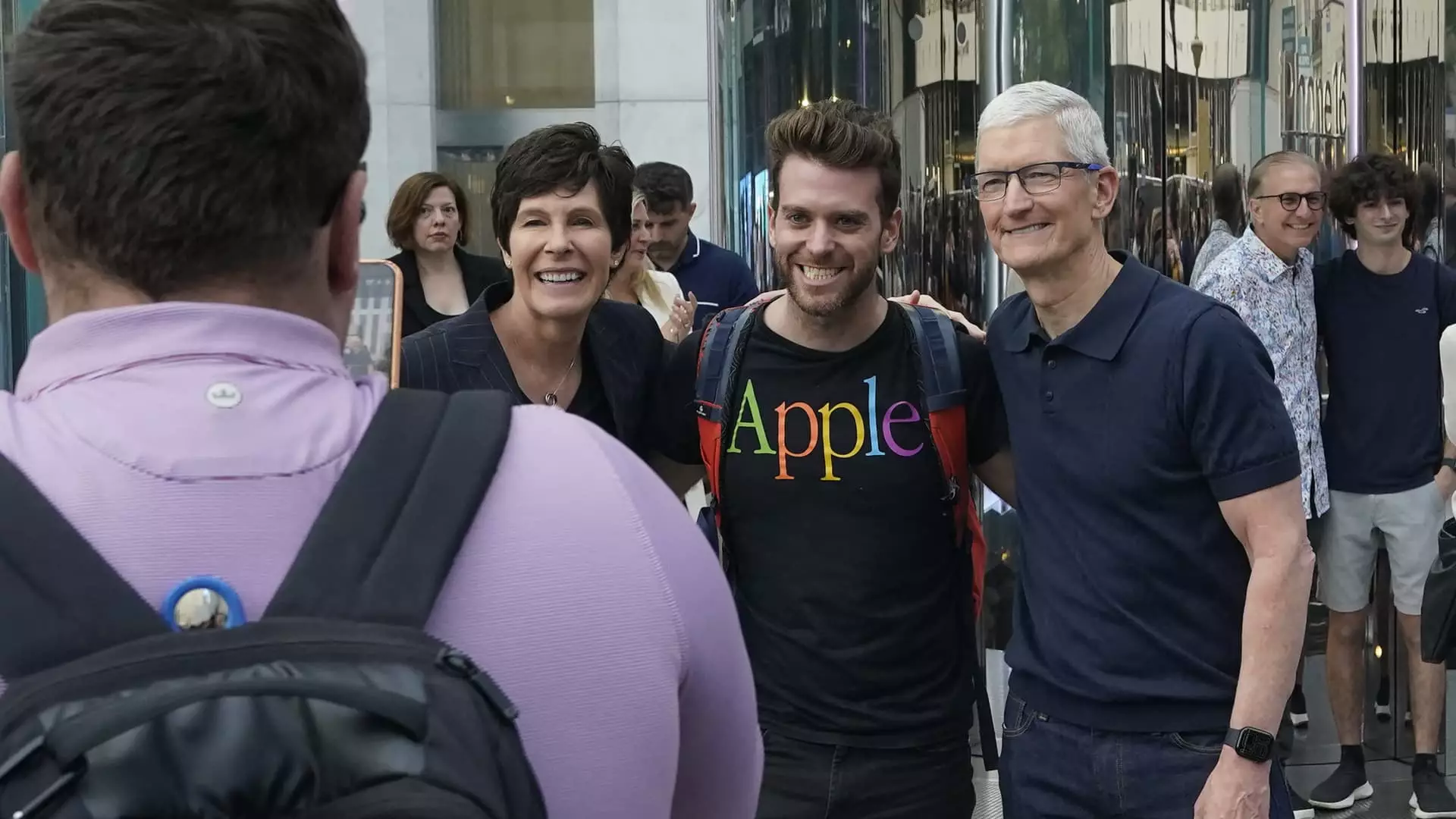The excitement surrounding the latest product launch from Apple reflects not only the company’s enduring popularity but also its position within the rapidly evolving tech landscape. On Friday, thousands of customers flocked to Apple stores globally to get their hands on the newly announced iPhone 16, Apple Watch Series 10, and AirPods 4. With pre-orders starting on September 13, Apple sought to energize its customer base, but the market’s response has been met with mixed reviews.
Despite the hoopla surrounding Apple’s latest releases, analysts are raising eyebrows over initial sales figures. Reports suggest that the first weekend sales for the iPhone 16 have faltered, trailing behind corresponding figures from the previous year by approximately 12%. This trend raises questions about whether consumer enthusiasm for Apple’s flagship devices is waning. Notable investment firms like Barclays, JPMorgan, and Bank of America have indicated that longer shipping times for the premium iPhone Pro models compared to last year’s metrics could signify a shift in demand dynamics, pointing towards a lukewarm reception.
Tim Cook, Apple’s CEO, remained optimistic in front of media as he surveyed customer queues outside the iconic Fifth Avenue store. Yet, his remarks led many to underscore uncertainty about overall sales trajectories, reflecting apprehension despite historical loyalty to the brand. The extravagant lighting ceremony signaling upgrades to Siri offered a colorful display, but the vibrancy of the event contradicted the more muted enthusiasm reflected in sales figures.
Compounding the woes surrounding the iPhone 16’s sales may be the anticipation versus reality of Apple’s new features, particularly the touted advancements in artificial intelligence branded as “Apple Intelligence.” While initiatives like text rewriting, object removal from photos, and a more interactive Siri could appeal to tech-savvy consumers, they seem insufficient to ignite a consumer frenzy akin to previous launches. Analysts from UBS have suggested that the lack of a “killer app” might hinder overall enthusiasm, reflecting a more evolutionary rather than revolutionary evolution in iPhone capabilities.
The limitation of these software enhancements to the iPhone 16 and the previous year’s iPhone 15 Pro adds to the feeling that Apple’s innovations are incremental. This approach of gradual improvement rather than groundbreaking overhaul may be at odds with consumer expectations that have been cultivated over the years by Apple’s formidable reputation.
On a more positive note, the Apple Watch Series 10 appears to be a step forward, featuring a larger display and the inclusion of vital health tracking capabilities like Sleep Apnea detection. These advancements align with a growing consumer demand for wearable technology that prioritizes health and wellness. Consumers increasingly look for gadgets that not only serve as fashionable accessories but also provide essential health data—an arena where Apple has managed to maintain a strong connection.
With the AirPods 4 introducing a fresh aesthetic in a smaller charging case alongside noise-cancellation options, Apple continues to cement its footing in the wireless audio space. However, in an era where numerous competitors are also enhancing their product lines, there remains a pressing question regarding whether these new features will be enough to sway consumers from rival brands.
Market Implications: The Road Ahead
The disappointing initial sales figures signal potential shifts in the market that Apple should heed. Analysts warn that consumers’ attitudes toward pricing and device necessity may have evolved, necessitating a reassessment of product strategies. UBS analysts remain cautious, urging investors not to overreact to the early data, attributing potentially skewed impressions to longer wait times last year due to supply chain challenges.
Ultimately, Apple stands at a crossroads; its reputation anchors it firmly in the industry, yet any missteps, especially in product strategy, can trigger shifts in consumer loyalty. As the company integrates resources into AI and wearable technology, it must ensure that creations resonate deeply with its user base. With a carefully crafted trajectory and attentive market analysis, Apple might yet steer through this slight turbulence and emerge fortified in the innovation space. Only time will tell if the storied tech giant can navigate these stormy waters and maintain its reign at the pinnacle of the technology market.


Leave a Reply